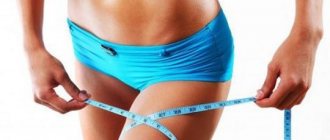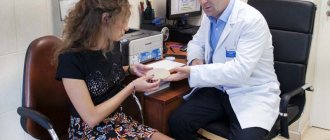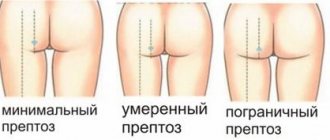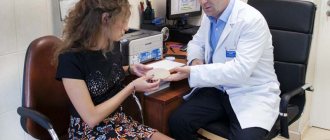Lipofilling is a completely natural and safe procedure for transplanting human adipose tissue from one part of the body to another. Lipofilling helps correct cosmetic or post-traumatic imperfections and add volume where it is lacking. Among many others, this operation has two main advantages:
- absence of allergic reactions;
- durability of the result.
As part of the lipofilling procedure, adipose tissue is collected from those areas of the human body where it is in excess, or at least in abundance. This is done by conventional liposuction. The fat is collected, undergoes the necessary purification, and then is introduced into the desired area of the body.
Lipofilling of the buttocks. The essence of the procedure
Lipofilling of the buttocks is carried out in two stages. The first is the collection of fatty material, and the second is its implementation into the buttocks themselves.
Where does donor tissue come from?
Depending on how much volume needs to be added to the buttocks, donor tissue is taken from one or several areas of the body. For gluteal lipofilling, either the abdominal or thigh areas (the so-called “breeches zone” or inner thigh) are suitable, since the adipose tissue in these areas is quite dense.
Adipose tissue is collected using a very thin cannula (no more than 2-3 mm), to which a vacuum surgical syringe is attached. The doctor removes the required amount of tissue, which is then sent for additional cleaning and processing. The buttocks, as a rule, require a fairly large amount of adipose tissue. Therefore, the donor material is collected with great care from several areas in order to avoid any unevenness in the end, especially considering that the adipose tissue is halved in volume during subsequent cleaning and centrifugation.
Subsequently, after cleaning, the donor tissue is implanted into the upper zones of the buttocks. Syringes with long, thin cannulas are inserted under the patient's skin several times so that the fat is distributed in a fan-like manner. Most of the donor tissue is injected directly into the fatty layer of the buttocks, while another, smaller part is injected under the gluteal fascia - a special layer that separates the muscle from the fatty tissue.
All stages of this operation take place in 1-3 hours, depending on the complexity.
The operation does not leave any noticeable scars. Small punctures from the cannulas heal quickly and become almost invisible.
How is the operation performed?
Immediately before the start of buttock augmentation surgery, markings are applied to the expected boundaries of the operated area. Then, using a special cannula, adipose tissue is removed from the donor area, after which the material is prepared in a special way and cleaned. Once completed, the fat tissue is transplanted into the problematic gluteal area. All manipulations are performed using special cannulas; upon completion of the procedure, cosmetic sutures are applied to the punctures. When performing lipofilling of the buttocks, general anesthesia is used, the duration of the operation is about 120 minutes.
Indications and contraindications for lipofilling of the buttocks
The operation is suitable for those who:
- there are post-traumatic defects on the skin - bumps, hollows;
- aesthetically unattractive “flat” buttocks;
- asymmetrical buttocks.
The operation is contraindicated for those who:
- does not have enough subcutaneous fat to be collected as a donor;
- has significant problems with the cardiovascular system;
- suffers from diabetes mellitus, liver and kidney diseases;
- has cancer.
Body Jet is a buttock correction with a lifetime guarantee
The most modern and safe way to achieve round buttocks and at the same time reduce your waist is to use a Body Jet water jet.
Expert comment:
“The second generation Body Jet is a unique device. Thanks to fat-saving technologies, he takes fat through the thinnest cannulas, washes it himself and transfers it to a special sterile container.
This process allows you to avoid contact of fat with oxygen (under the influence of oxygen, adipocytes oxidize and quickly die).
Such fat is immediately ready for further work - there is no need to carry out lengthy manipulations with it, which are common in traditional lipolifting. In addition, this technology allows you to preserve the entire volume of adipose tissue.
.
This is very important when we are going to do a thigh lift and buttock lift
in the same procedure.”
Maxim Vasiliev, plastic surgeon.
Yes, yes, that's exactly what happens. In ONE treatment, Body Jet removes excess fat from the waist and moves it to a more suitable location. This means that after the end of the rehabilitation period (only 7-10 days), you will be able to boast of both a thin waist and a high, round “Brazilian” butt.
The operation itself takes about two hours, and the effect of it, while maintaining a stable weight and the absence of bad habits, lasts for life: your own adipose tissue takes root well and almost does not dissolve.
Preparation and rehabilitation period for buttock lipofilling
At least a month should pass between the first consultation with a plastic surgeon and the operation itself. During this time, the patient must carefully prepare:
- Stop smoking;
- Do not drink alcohol (at least a week before surgery);
- Stop taking vasoconstrictor drugs (if necessary, the surgeon can prescribe their analogues).
- Conduct the necessary tests and examinations (pelvic ultrasound, blood tests, consultations with specialized specialists).
Before the operation, you need to make sure that in the house, if the patient will spend the first days of rehabilitation outside the hospital, there is everything necessary - medications prescribed by the doctor, a schedule for taking them, a large amount of clean drinking water and a supply of food for at least a week.
The recovery period after lipofilling of the buttocks is, as a rule, quite painless in comparison with other, more complex plastic surgeries. The first inconvenience that patients will encounter is the inability to sit in a sitting position for about a week after the procedure. Standing for the patient is not only not prohibited, but even useful in order to improve blood flow. However, walking in the first days should be short and alternate with lying only on the stomach.
The entire rehabilitation period will take about 2-4 months, after which the patient will no longer notice any traces of the operation and will be able to evaluate the result. Immediately after surgery, he will need to wear compression garments and take pain medication if necessary. After a week, the patient will be able to return to normal activity, but with restrictions - continue to wear compression garments, do not take hot baths, saunas, do not swim in open water, try to monitor physical activity: do not allow yourself to overwork, but also do not spend all your time lying down in bed. Sports activities will also be limited - any stress on the pelvic area will have to be abandoned.
At first, you may feel discomfort while sitting, but this goes away after about a month after the operation, when the adipose tissue has finally taken root.
The effect of the operation can last for the entire life of the patient. Over time, adipose tissue will change, some of it will be processed by the body. But experience shows that patients with lipofilling of the buttocks were able to be satisfied with the result for many years. It is important to note that any significant changes in the body - excess weight gain or severe weight loss - can have a worse effect on the effect of the operation.
Expert commentary
Do you strive to get firm, beautifully shaped buttocks, but neither training nor dieting gives the desired result? You can become the owner of ideal buttocks quickly and effectively, without the need for implants, with the help of lipofilling - buttock enlargement surgery. This low-traumatic intervention does not require long-term hospitalization; the use of modern technologies makes the operation safe and painless. After recovery, you get an excellent result, without scars or scars. To get more complete information specific to you, sign up for a consultation, during which we will discuss your upcoming treatment together.
Plastic surgeon Dmitry Alexandrovich Zimin
What are the possible complications with lipofilling of the buttocks?
An important advantage of this operation, as mentioned earlier, is the minimal number of complications. Unlike endoprosthetics, when a foreign object is implanted into the body, with lipofilling there will be no possible allergic reactions, as well as tissue rejection.
The most common complications are excessive swelling, seromas (collections of lymph fluid under the skin) or hematomas (collections of blood). All of them, as a rule, pass without medical assistance, and if necessary, they are removed painlessly for the patient and the future result of the operation.
You can learn more about this procedure from the “Lipofilling” section.
Lipofilling of the buttocks: Brazilian butt and body shaping in one syringe
Elastic, soft, round and swaying seductively when walking... Both women and men attach great importance to this part of the body. And surgeons offer several ways to “upgrade” it.
Lipofilling of the buttocks is a plastic surgery to increase the size and/or change the shape of the butt by transplanting fat cells obtained from other areas of the body - the abdomen, thighs, etc. How effective is this technique, why is it better than installing implants, and how much will it cost the patient? How is the rehabilitation going? Are there complications and side effects? TecRussia.ru offers the most complete overview:
↑ Why is this operation performed? Main indications
Most often lipofilling is used:
- as an independent way to enlarge the buttocks;
- as an additional procedure to improve or correct the results of endoprosthetics (gluteoplasty) or tightening of this area;
- to model an hourglass figure: in this case, the fat for transplantation is pumped out exclusively from the back and abdomen, which forms a thin waist, which in contrast is even more emphasized by an enlarged butt.
In addition, it can be considered as one of the possible options for solving the following aesthetic problems:
- ugly shape and/or asymmetry of the buttocks;
- their slight ptosis (drooping) and retraction in the middle part;
- the presence of atrophic (retracted) scars in this area - with the help of transplanted fat they can be filled and raised to the level of healthy skin;
- as one of the methods of rehabilitation therapy in case of traumatic amputation of this area;
- as an addition to surgical liposuction to form the most aesthetic contours of the figure;
↑ Why is lipofilling better than other methods of buttock correction and does it have any disadvantages?
The main feature of fat cell transplantation (and not only in the butt area) is that with this technique you can achieve results comparable to a full-fledged operation, while avoiding many of the disadvantages of serious surgery. Unlike gluteoplasty, this operation allows:
- Avoid graft rejection. The patient’s own adipose tissue, unlike other fillers and endoprostheses, will not cause allergies and will not lead to the formation of capsular contracture.
- Give the buttocks the most natural shape and appearance: with the correct processing and injection technique, the fat is distributed evenly, does not contour or show through the skin, and the final result looks absolutely natural. With implants, everything is more complicated - if you look closely, they are almost always visible to one degree or another from the side, and sometimes they also form a rather unnatural contour of the figure.
- Slightly reduce trauma, speed up healing and shorten the rehabilitation period: there are only a few small punctures left on the body for collecting and moving the graft, and if the volume of correction is not too large, you can do without general anesthesia.
However, lipofilling of the buttocks also has obvious disadvantages:
- Limited effectiveness: if you need to significantly increase the size of the buttocks or compensate for a serious soft tissue deficiency (for example, after amputation of a large piece of muscle in this area), you will have to install implants.
- To achieve a pronounced effect, you may need from 500 to 2500 ml of adipose tissue (on average, up to 1.5 liters of natural filler are used for both buttocks). And in order to form such a quantity of transplant, it is necessary to take approximately twice as many “raw”, unrefined cells from the patient. Accordingly, somewhere in other parts of the body there must be a fat depot of the required volume.
- The result is difficult to predict: when using implants, the final appearance of the buttocks after surgery is easy to calculate and even modeled in advance in a three-dimensional image. But it is almost impossible to predict exactly how many transplanted cells will take root. As a result, to achieve the desired effect, the patient may need from 1 to 3 additional corrective procedures, each of which costs and takes about the same time as the main one.
At one time, as an alternative to lipofilling, the method of buttock augmentation with hyaluronic acid fillers was actively promoted (see the article “Macroline”), but now most plastic surgeons have abandoned it due to the short duration of the result, high cost and a large number of complications.
- How to enlarge your buttocks: popular methods
In addition, buttock lifts, surgical and with threads, are always popular. But it would be incorrect to compare its effectiveness with fat transplantation: these procedures do not replace, but complement each other and are often carried out as a single complex to achieve optimal effect.
↑ How to prepare for surgery: tests and lifestyle changes
Lipofilling of the buttocks begins with a consultation with the selected surgeon. There, the doctor conducts a face-to-face examination, collects the necessary information and confirms the presence of indications for surgery or suggests other, more appropriate ways to solve the patient’s problem.
Next, the required volume of adipose tissue for transplantation, donor zones and areas for further graft introduction are determined. To eliminate misunderstandings at this stage, the planned result is often modeled in the form of a three-dimensional image: although it is not perfectly accurate, it greatly simplifies the discussion of details, nuances and wishes regarding the future operation. And in order to exclude the presence of contraindications, the patient must undergo a number of diagnostic measures:
- general blood and urine tests;
- determination of antibodies to viral hepatitis;
- coagulogram;
- ECG;
- fluorography or a survey image of the lungs;
- biochemical blood test.
If there are minor deviations from the norm, you may need to be examined by related specialists (cardiologist, endocrinologist) and additional examinations - ultrasound, endoscopy, etc., and if general anesthesia is necessary, a consultation with an anesthesiologist.
2-3 weeks before surgery, it is recommended to stop smoking and drinking alcohol - these measures not only reduce the risks of general surgical complications, but also increase the survival rate of transplanted fat cells. To prevent the development of bleeding or the formation of extensive hematomas, the patient must also stop taking anticoagulants and other medications that affect blood clotting.
↑ How is lipofilling of the buttocks done?
Fat tissue transplantation is carried out in three stages:
- Collection of cells for transplantation. Most often, the donor area becomes the thigh area and the anterior abdominal wall - the highest quality fat is deposited here, without foreign impurities, and you can almost always gain the required amount. Adipocytes are obtained by liposuction: the surgeon inserts thin cannulas under the skin in the target area, through which the future transplant is pumped out. Depending on the scope of the intervention, general or (less frequently) local anesthesia may be used.
- Next, the resulting adipose tissue is cleaned of biological impurities (dead cells, blood, lymph, etc.) using centrifugation. The goal of this stage is to increase the number of viable adipocytes per unit volume of the graft. Upon completion, the finished purified material is drawn into syringes.
- Direct fat transfer to the buttocks. From pre-prepared syringes using long thin cannulas, cleaned cells are introduced into the thickness of the hypodermis and distributed there as evenly as possible. Typically, surgeons use a “fan” technique for this, in which the cannula repeatedly changes its direction under the skin - in this way, fairly large areas can be treated through a minimum number of punctures.
The entire operation, from the collection of cells to the end of their transplantation, lasts about 2-4 hours, depending on the amount of work (the third stage, the most important and labor-intensive, takes most of the time). Immediately after the transplantation is completed, the first changes will be visible, but the final results are still far from being assessed.
| Photo 1,2 – before and after lipofilling of the buttocks: | |
↑ How is rehabilitation going?
The patient usually spends the first day (sometimes 2-3) in the hospital. This is the most dangerous period in terms of the development of various kinds of complications, which must be carried out under the supervision of doctors. An exception can be made only if a very minor correction was carried out under local anesthesia.
The recovery period after lipofilling of the buttocks takes a total of about 3-4 weeks. The most problematic for the patient will be the first few days, during which the new butt and donor area will be noticeably painful. In addition, swelling will inevitably appear and will increase for some time, hematomas will appear, and general weakness and malaise are also possible. Most of these “side effects” are associated with liposuction, which was performed to collect the graft; therefore, the larger it was, the longer it will take for complete recovery. In addition, there are two more factors that will make rehabilitation noticeably less pleasant:
- The first is the need to sit as little as possible. Acceptable positions are lying (not on your back) and standing. Such a strict measure is necessary so as not to subject the transplanted fat to excess pressure, under the influence of which it can become deformed and/or displaced.
- The second nuance is the mandatory wearing of compression garments. This type of medical clothing not only reduces the size of edema and hematomas, but also has a constant massage effect on tissues that have undergone deformation. Compression underwear is made from a material that “breathes”, does not stretch over time, has the ability to regulate the compression force, and at the same time does not restrict movement, and some models even boast a similar design. However, most patients find it extremely uncomfortable - so it is worth mentally preparing for certain inconveniences in advance. During the first two weeks, such underwear will need to be worn constantly, incl. during sleep, and then for about 2 more weeks - during the daytime.
Intense sports, as well as visits to baths, saunas and active tanning are prohibited for at least a month - these procedures increase swelling and can negatively affect the survival of transplanted fat cells. Otherwise, there are no significant restrictions on lifestyle, and dosed physical activity (walking, regular exercise) is even useful.
| Photo 3.4 – Fat transfer from the back to the buttocks to enlarge them and create a thin waist: | |
↑ When does the result appear and how long does it last after lipofilling of the buttocks?
The changes obtained can be assessed no earlier than 4 months after the operation, and in some cases it will take even longer - up to six months. During this period, some of the transplanted cells die and are naturally eliminated from the body. The rest finally take root in the new place and remain there forever, as a natural part of our body. In the future, the butt can only decrease as a result of diet or weight loss for other reasons, so it is extremely important to maintain your body weight within the original limits.
If, after 4-6 months, it becomes obvious that the result of the operation was insufficient, additional correction is carried out - taking and transplanting an additional amount of fat, taking into account how many cells were transplanted the first time and how many of them have taken root in a given patient.
↑ Contraindications, complications, possible side effects
Lipofilling of the buttocks is not performed if the following factors are present:
- pathologies of the cardiovascular system;
- metabolic disorders;
- pregnancy and breastfeeding;
- tumors of various localization and genesis;
- ARVI and other infectious diseases;
- diabetes;
- disorders of the blood coagulation system;
- Also, doctors do not recommend lipocorrection until the figure is fully formed (for girls this happens at about 25 years old).
Since we are talking about a low-traumatic, but still an operation, it is characterized by all the standard surgical complications and side effects, and they can occur both in the buttocks and in the donor area. The most common of them:
- hematomas, bruises and swelling;
- a feeling of numbness or, conversely, hypersensitivity of the skin;
- pain and inflammatory reactions.
| Photos 5.6 – before and after changing the shape of the buttocks using lipofilling: | |
As a rule, these troubles go away on their own within a few days. The exception is sensitivity disorders, which in some cases can persist for up to several years. More serious, but also rarer problems:
- All major complications after surgical liposuction;
- Clumping of the transplanted fat. As a result, the buttocks look uneven and lumpy. As a rule, this occurs when the surgeon makes mistakes at the stage of collecting adipose tissue or when the technology for its purification is violated. In the future, it can lead to compaction of the tissues of the treated area, as well as the formation of subcutaneous nodules. To return everything to its previous state, liposuction of previously transplanted cells will be required.
- Acute inflammatory processes that are possible if a third-party infection was transferred to the buttocks along with the transplant. They are treated with a course of antibiotics.
- Unsatisfactory aesthetic result. A consequence of poor survival of fat (this can be either a surgeon’s mistake or an individual characteristic of the patient) or errors at the stage of planning and/or performing the operation - for example, with uneven transplantation, asymmetry or significant deformation of the buttocks can occur. Such problems can be corrected in two ways: either add fat to the missing areas using another lipofilling session, or remove excess fat using liposuction.
↑ How much does lipofilling of the buttocks cost - current prices
The patient's costs for this operation will consist of several parts. Firstly, the cost of the actual fat transplantation. It depends on its volume and can vary significantly: you can transplant 200-400 ml within 100,000 rubles, but for 700-800 ml you will have to pay about 200,000.
Secondly, the price of transplant collection (liposuction), which is also mainly determined by volume. On average it is 30-50 thousand rubles. And the third component is additional costs, the most “tangible” of which are anesthesia, hospital stay and compression garments. Sometimes surgeons include them in the total final price, and sometimes you will have to pay extra for them separately - this point must be clarified during the consultation.
Thus, the average price for lipofilling of the buttocks in Moscow will be about 200,000 rubles , and the general range is from approximately 100 to 350 thousand. This is comparable to the cost of gluteoplasty with good, high-quality implants - however, as we have already found out, each operation has its own pros and cons that are just as significant as the financial part.
Experts' opinions:
Kopasov Andrey Evgenievich Plastic surgeon, Frau Clinic
The main advantages of this procedure are the natural appearance of the buttocks, as well as the immediate correction of other problem areas: fat for transplantation is taken from the sides, in some cases from the abdomen, knees, riding breeches, and very often from the back area, which gives the most noticeable result, since the buttocks appear even more pronounced against the background of the changed contours of the upper body. Disadvantages include the possible formation of fatty cysts, oleomas (injection lipogranulomas), inflammatory conditions, etc. Also, we often encounter a situation where a girl simply does not have enough adipose tissue to carry out correction.
Golovanev Pavel Sergeevich Plastic surgeon, MontBlanc clinic
Lipofilling is a minimally invasive and extremely effective operation if it is necessary to give the buttocks a rounded shape, eliminate recessed areas, and add overall volume and attractiveness to them. Installation of an implant is often considered as an alternative, but fat grafting is a safer option: in this case, capsular contracture is eliminated, the risk of infectious complications is significantly reduced, and there are no obvious scars left, which affects the speed of rehabilitation. The method has no significant disadvantages. The main thing is that the patient has a normal body mass index so that there is enough body fat for transplantation.
Gagarina Svetlana Vyacheslavovna Plastic surgeon, Doctor of Medical Sciences, Professor
Recently, this method has become very fashionable and in demand. Its main advantage is the ability to remove excess subcutaneous fat in one place and use it for transfer to the buttocks, that is, we simultaneously “kill two birds with one stone.” The second advantage is the absence of incisions, since both liposuction and lipofilling are performed through punctures that remain aesthetically invisible.
The third advantage is that no foreign bodies are used. By comparison, endoprosthetics is a much more complex operation that requires certain knowledge and skills. Also, unlike mammary glands, implants quite strongly atrophy the gluteus maximus muscles, and over time they become noticeable, especially if they were initially large.
For these reasons, today either isolated lipofilling of the buttocks or a combined technique is mainly used. The essence of the latter is that small endoprostheses are installed, and the rest of the missing contour is achieved with one’s own fat. But even in this case, we get an incision, severe pain, and the likelihood of complications is not so low.
The main disadvantage of lipofilling is that after transplantation at least half of the fat cells are lost. Although it should be noted that compared to other zones, in the gluteal region the engraftment rate of adipocytes is the highest and ranges from 30 to 50%. Other disadvantages: the result is not so stable that it can be used everywhere; there is a possibility of developing fibrosis and cysts. Also, if we are talking about very large volumes of lipotransfer, especially if it is injected not only under the skin, but also into the gluteus maximus muscle, such an extremely unpleasant complication as fat embolism is possible.
Also, in order to create an attractive contour of the “fifth point”, you need to move quite a lot of fat, hence the most important limitation of this method: it is not suitable for very thin patients. To collect clean material in a volume of at least 200 ml in each buttock, it needs to be “unstuck” from head to toe - this means serious injuries, blood loss and all the difficulties associated with recovery. And one more important point: in order for the fat to take root well, the butt must be at rest for 4-6 weeks, that is, you cannot even sit on it for a long time with all your weight, you need to use circles, special chairs, and so on.
In general, I have a good attitude towards lipofilling, especially in patients who have where to take it from and where to move it, but in general I am still wary of the megatransfers that are sometimes performed - up to 1 liter of pure lipoaspirate into each buttock. Such huge volumes, in my opinion, are fraught with negative consequences, but with a moderate approach you can get very good results.
Firsov Andrey Valentinovich Plastic surgeon, Beauty Doctor clinic
I prefer this method to all alternative options for buttock augmentation. In the presence of donor areas of adipose tissue, this is the method of choice for gluteoplasty. The only noticeable disadvantage is the possibility of resorption of a large part of the injected volume, when the procedure needs to be repeated, but, fortunately, with proper preparation and execution this happens very rarely.
And the established fat - well, where will it resolve? It’s not going away from your butt or stomach, is it?
With age, fat on the face goes away, this is confirmed by sunken cheeks, if there is no swelling from a spasmodic neck, isn’t that so?
With age, atrophy of fat (and other) cells occurs, and facial fat disappears. These are old fat cells. With lipofilling, we implant young cells. After the fat is taken, it undergoes processing, it is centrifuged, old cells and damaged ones die off, and young ones survive. They are the ones who are transplanted.
Facial lipofilling, photo from the archive of surgeon D, R, Grishkyan, there are contraindications, consultation with a specialist is required.
How is it done?
The procedure is carried out in several stages; soft tissue incisions and subsequent sutures are not used. This is not plastic surgery in the usual sense: there will be no marks left on the skin after 2-3 weeks.
Forward planning
During the initial consultation, the doctor analyzes the condition of the area to be corrected and the area where donor cells will be collected, and then announces the expected results.
It is a mistaken belief that buttock augmentation can be performed to any volume in 1 session at the request of the patient. In fact, the possibilities of this correction method are limited by the amount of fat in the subcutaneous depots.
If it is not enough, lipofilling will have to be repeated twice or three times to achieve the effect. More often, the source of material that will be introduced in the hip area is the abdomen, back, side surfaces of the torso, and shoulders.
Gentle liposuction and preparation of extracted fat
Adipocytes are collected using a special aspiration syringe equipped with a blunt cannula. It is injected through miniature punctures directly into the tissue. The field is first injected with an anesthetic. The method of pain relief (local or general anesthesia) is chosen by the surgeon, it depends on the area of the upcoming intervention and the planned result.
The isolated adipose tissue is prepared for subsequent injection. Active adipocytes are separated from artifacts - damaged, “dead” cells and blood in a centrifuge. From 300-400 milliliters of exfusate after processing, about 100 milliliters of automaterial ready for injection are obtained.
Modeling injections
The injection is made into the recipient area in small portions until the desired shape and contour is created (usually from 400-500 ml for each of the buttocks). This technique allows viable adipocytes to adapt to transplantation as quickly as possible: each microstructure receives enough nutrients, trophic-regenerative processes are stabilized in the shortest possible time. On average, 1.5-2 months after the manipulation, 85-90% of the transplanted material is successfully integrated into the subcutaneous tissue, where it remains forever.
It must be remembered that implanted fat cells behave the same as all other ones - their size will decrease as you lose weight and increase as you gain weight. To maintain the results obtained, it is recommended to maintain a stable weight, avoiding sudden fluctuations.
Contraindications
Despite the minimal degree of tissue trauma and safety, there are a number of limitations under which you should not resort to the procedure:
- infectious-inflammatory diseases in the “acute” phase;
- lactation or pregnancy;
- oncological processes;
- skin lesions in the area of the proposed intervention;
- chronic diseases in the stage of decompensation.
Lipofilling is characterized by strict age restrictions: buttock augmentation with fat is not carried out until the age of 18. If the doctor decides that the formation of the skeleton and soft tissues is not complete, it will be recommended to postpone the manipulation until 23-24 years of age.
To achieve the desired effect, the volume of subcutaneous tissue, which will serve as a source of cells, must be sufficient. In some cases, in patients with asthenic physique (when the fat layer has minimal thickness), lipotransfer is impossible due to the lack of the required number of adipocytes in the donor area.










